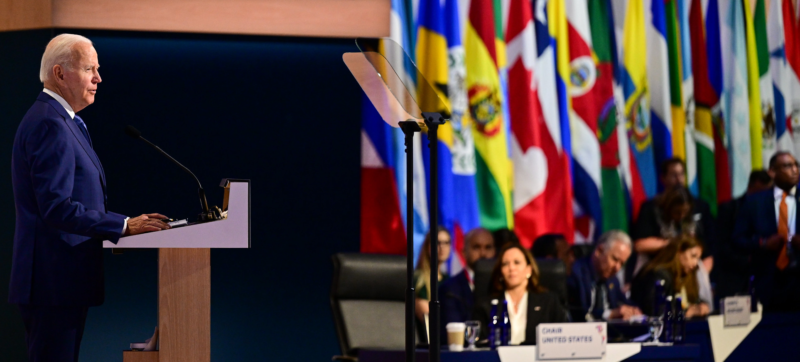Adios, Amigos
As Hillary Clinton travels through Latin America this week, the U.S. secretary of state will find it profoundly transformed from the relatively serene region she encountered as first lady in the 1990s.
The number of migrants attempting to cross the border into the United States is already reaching record highs—and the number is expected to rise by late summer. Leaders from the countries that send the most people—Cuba, El Salvador, Guatemala, Honduras, Nicaragua, and Venezuela—didn’t attend this month’s Summit of the Americas in Los Angeles. US President Joe Biden didn’t extend an invitation to Cuba, Nicaragua, and Venezuela, citing their dictatorial regimes. But the other three countries, which make up the Northern Triangle, rebuffed entreaties to attend from administration officials, including Vice President Kamala Harris and Secretary of State Antony Blinken. The brush-off does not bode well for US cooperation with these governments, which are vigorously attempting to fend off international scrutiny of corruption in their administrations and judicial systems.
The Biden administration, however, has unfurled a plan—the aptly named Root Causes Strategy—to shore up Central American economies in a bid to make these countries more hospitable places to live. The initiative, led by Harris, appears to follow a playbook US administrations have used in the past: namely, emphasizing growing investment from large U.S. corporations without addressing the region’s breathtaking income gap. Other initiatives cut from the same cloth—such as the Dominican Republic‒Central America‒United States Free Trade Agreement, or CAFTA—have ended up mostly benefitting multinational corporations and the region’s ruling families. Extending this business-as-usual approach will likely fail to improve conditions for the very people who are most apt to pick up stakes and head for the United States.
To make a difference in the lives of the majority of Central American residents, who live on just a few hundred dollars a month, the Biden administration should focus on changing the underlying structures of these countries’ economies. Rather than tout pledges from big companies to expand manufacturing hubs in the region, US policymakers should use their leverage with Central American leaders to reduce the size of the informal economy and usher more of their citizens into jobs that provide more security and a modicum of benefits. They should attempt to diversify Central American exports, which are focused too heavily on a small number of goods, such as apparel and fruit. Finally, any successful effort would do well to harness the potential of the billions of dollars of remittances immigrants send home to better strengthen the communities they have left behind.
[...]
As Hillary Clinton travels through Latin America this week, the U.S. secretary of state will find it profoundly transformed from the relatively serene region she encountered as first lady in the 1990s.
Insulza appears to be headed for reelection as Secretary General of the OAS. The Chilean diplomat is gathering support throughout the hemisphere. The US and Venezuela are among the holdouts.
The OAS needs to be reformed, but the changes need to emerge from accurate analysis of the problems confronting both Latin America and the OAS.
